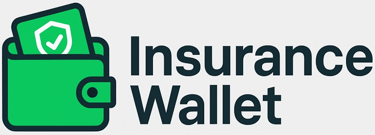⚠️ Risk, Peril, and Hazard – The Trio Every Advisor Should Master
🌟 Introduction
In insurance, three terms form the foundation of understanding losses:
Risk, Peril, and Hazard.
Many beginners mix them up, but as an advisor, knowing the difference helps you explain policies clearly and avoid miscommitment to clients.
Let's simplify these concepts using real-world examples.
🌀 What is Risk?
Risk means uncertainty.
It is the possibility that a loss may happen.
There may be loss, or there may not be — that uncertainty is risk.
👇 Example
You drive your car daily.
There is a chance you might meet with an accident.
That chance = Risk.
No loss yet — only the possibility of loss.
💡 Key Point
Insurance exists because risk exists.
💥 What is Peril?
Peril is the actual cause of loss.
It is the event that creates the damage.
👇 Example
If a house catches fire,
Fire is the peril.
If someone’s phone is stolen,
Theft is the peril.
💡 Key Point
Risk is the chance of loss.
Peril is what actually causes the loss.
🧨 What is Hazard?
Hazard is anything that increases the chance of a loss happening — or makes the loss worse.
Hazard does not cause loss directly.
It only pushes the risk higher.
👇 Example
Driving with worn-out tyres
Storing petrol cans in a shop
Faulty old wiring in a building
These do not cause loss by themselves…
but they increase the possibility that a peril like fire or accident may occur.
🔍 The Difference in One Sentence
Risk = Possibility that something bad may happen
Peril = The event that causes the bad thing
Hazard = The condition that makes the bad thing more likely or severe
🚗 Real-Life Story to Understand
Arjun drives his scooter every day.
Scenario
His tyres are old and slippery → Hazard
Because of that, he may skid → Risk
One day, he slips on a wet road and crashes → Peril (Accident)
He gets injured and the scooter is damaged.
And insurance steps in:
Not because of the old tyres (hazard),
but because the peril (accident) occurred.
🎯 Why This Matters for Advisors
When you understand this trio, you can:
✅ Explain policies confidently
✅ Advise customers correctly
✅ Identify dangerous situations (hazards)
✅ Earn trust by educating clients properly
And yes — this is a common exam topic in IC-01.
🧠 Quick Self-Test
Fill in the blanks mentally 👇
Driving has a ________ of accident.
Accident happens due to skidding — this is the ________.
Bald tyres made the accident more likely — this is the ________.
Answers:
Risk
Peril
Hazard
If you got all right — you’re learning fast 👏
✅ Final Takeaway
Risk is uncertainty.
Peril is the cause.
Hazard increases the chance.
Remember this sentence — it will help you in exams and in real client conversations.
Example:
A house is damaged when:
Heavy rain causes flooding,
The flood leads to a short circuit,
The short circuit causes fire.
If the policy covers fire but excludes flood — the claim will still be paid, because fire (the proximate cause) was the direct cause of damage.
But if the property was damaged only by flood water, the claim would be rejected (flood = excluded peril).
⚖️ Why It’s Important:
✅ Helps determine whether a claim is payable or not
✅ Avoids confusion when multiple causes are involved
✅ Ensures insurers pay only for covered perils
📘 Applies to:
All types of insurance where loss has multiple contributing factors — fire, marine, motor, etc.
